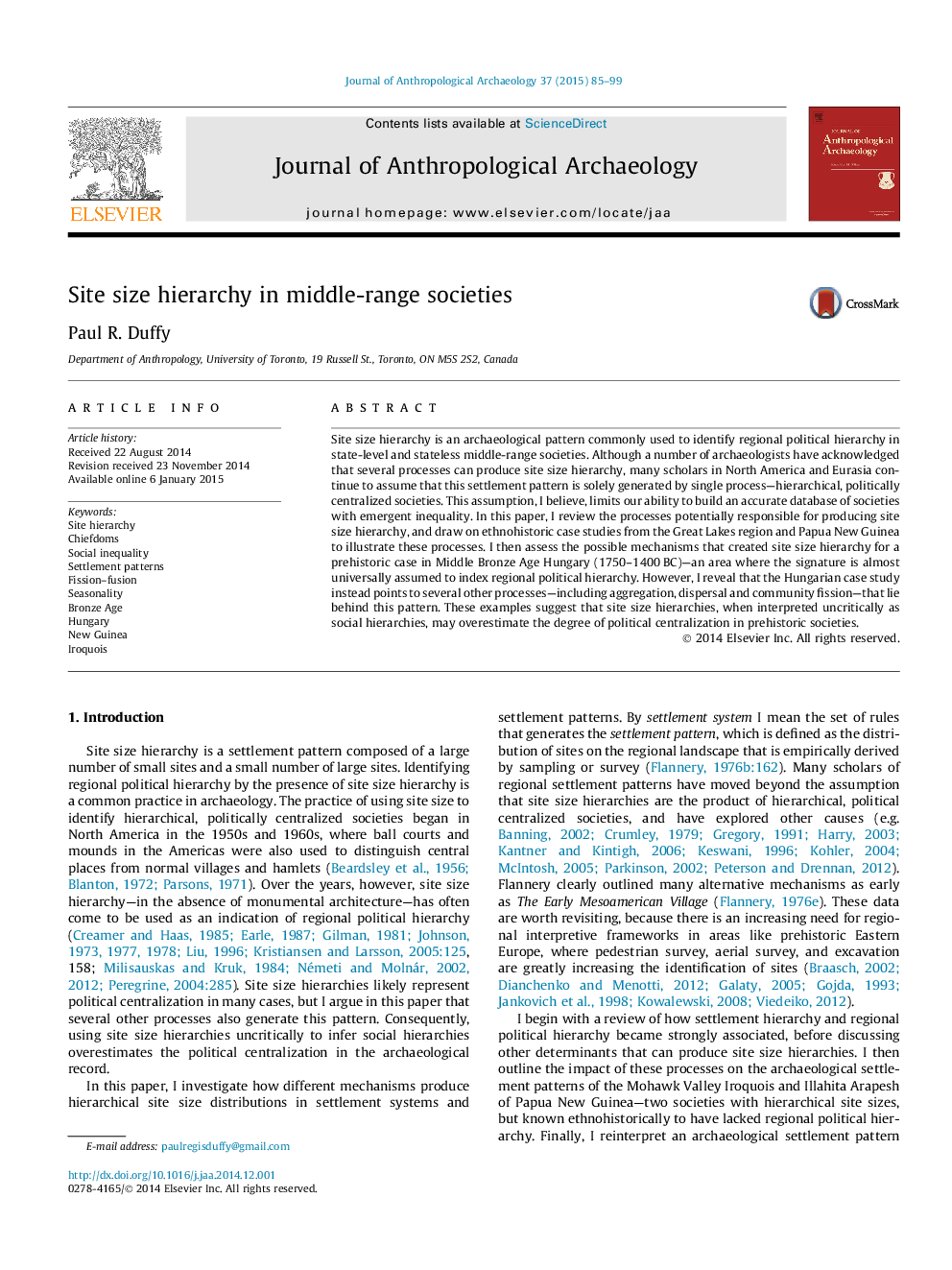| کد مقاله | کد نشریه | سال انتشار | مقاله انگلیسی | نسخه تمام متن |
|---|---|---|---|---|
| 1034897 | 1483853 | 2015 | 15 صفحه PDF | دانلود رایگان |
• Processes beyond regional political hierarchy can explain site size hierarchy.
• Five additional processes producing site size hierarchy are discussed.
• Warfare, fission, catchment, and seasonality produce Ilahita Arapesh site size hierarchy.
• Warfare, seasonality, and palimpsest produce Mohawk Valley Iroquois site size hierarchy.
• Warfare, fission, and palimpsest produce site size hierarchy in Bronze Age Hungary.
Site size hierarchy is an archaeological pattern commonly used to identify regional political hierarchy in state-level and stateless middle-range societies. Although a number of archaeologists have acknowledged that several processes can produce site size hierarchy, many scholars in North America and Eurasia continue to assume that this settlement pattern is solely generated by single process—hierarchical, politically centralized societies. This assumption, I believe, limits our ability to build an accurate database of societies with emergent inequality. In this paper, I review the processes potentially responsible for producing site size hierarchy, and draw on ethnohistoric case studies from the Great Lakes region and Papua New Guinea to illustrate these processes. I then assess the possible mechanisms that created site size hierarchy for a prehistoric case in Middle Bronze Age Hungary (1750–1400 BC)—an area where the signature is almost universally assumed to index regional political hierarchy. However, I reveal that the Hungarian case study instead points to several other processes—including aggregation, dispersal and community fission—that lie behind this pattern. These examples suggest that site size hierarchies, when interpreted uncritically as social hierarchies, may overestimate the degree of political centralization in prehistoric societies.
Journal: Journal of Anthropological Archaeology - Volume 37, March 2015, Pages 85–99
